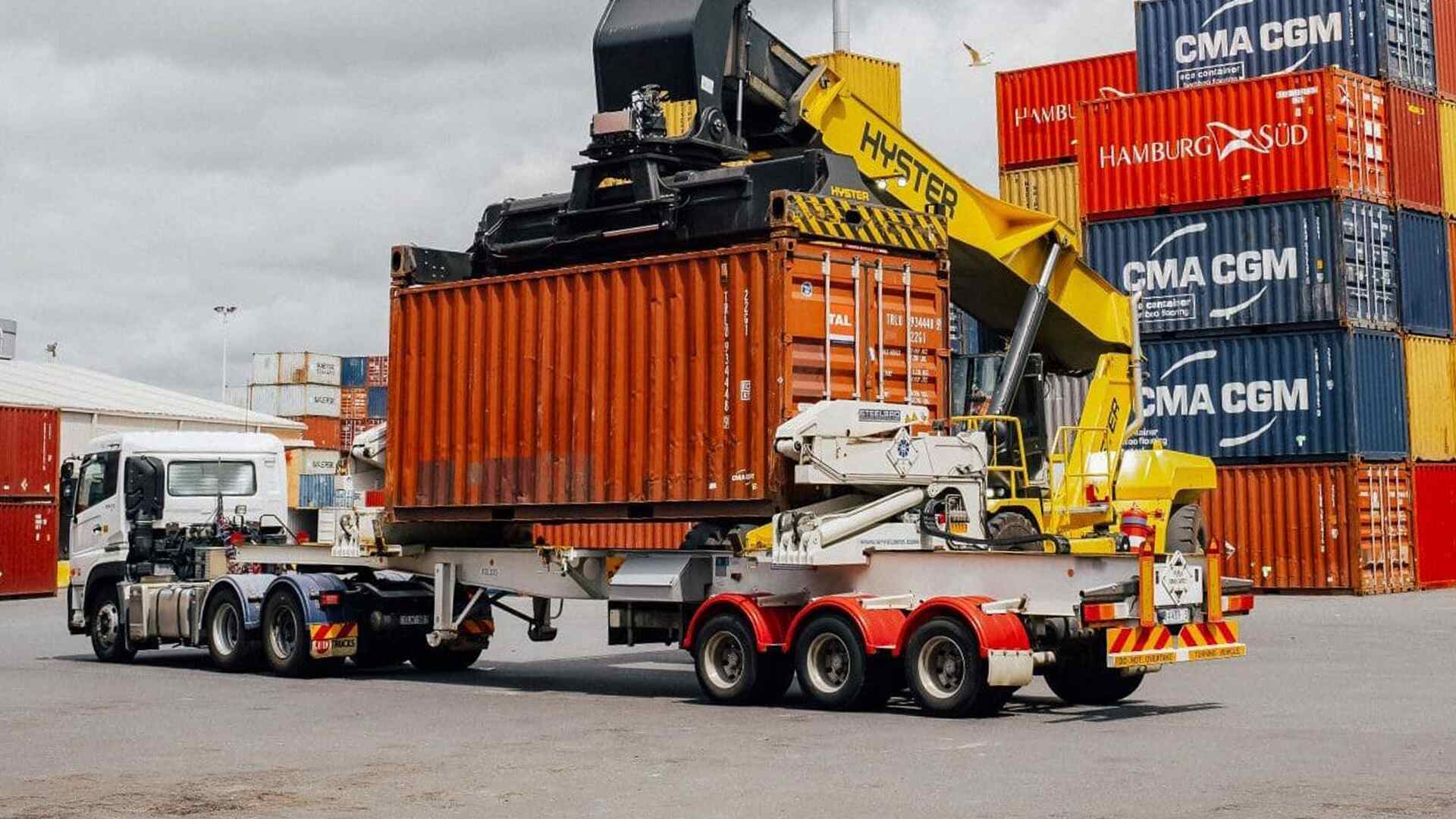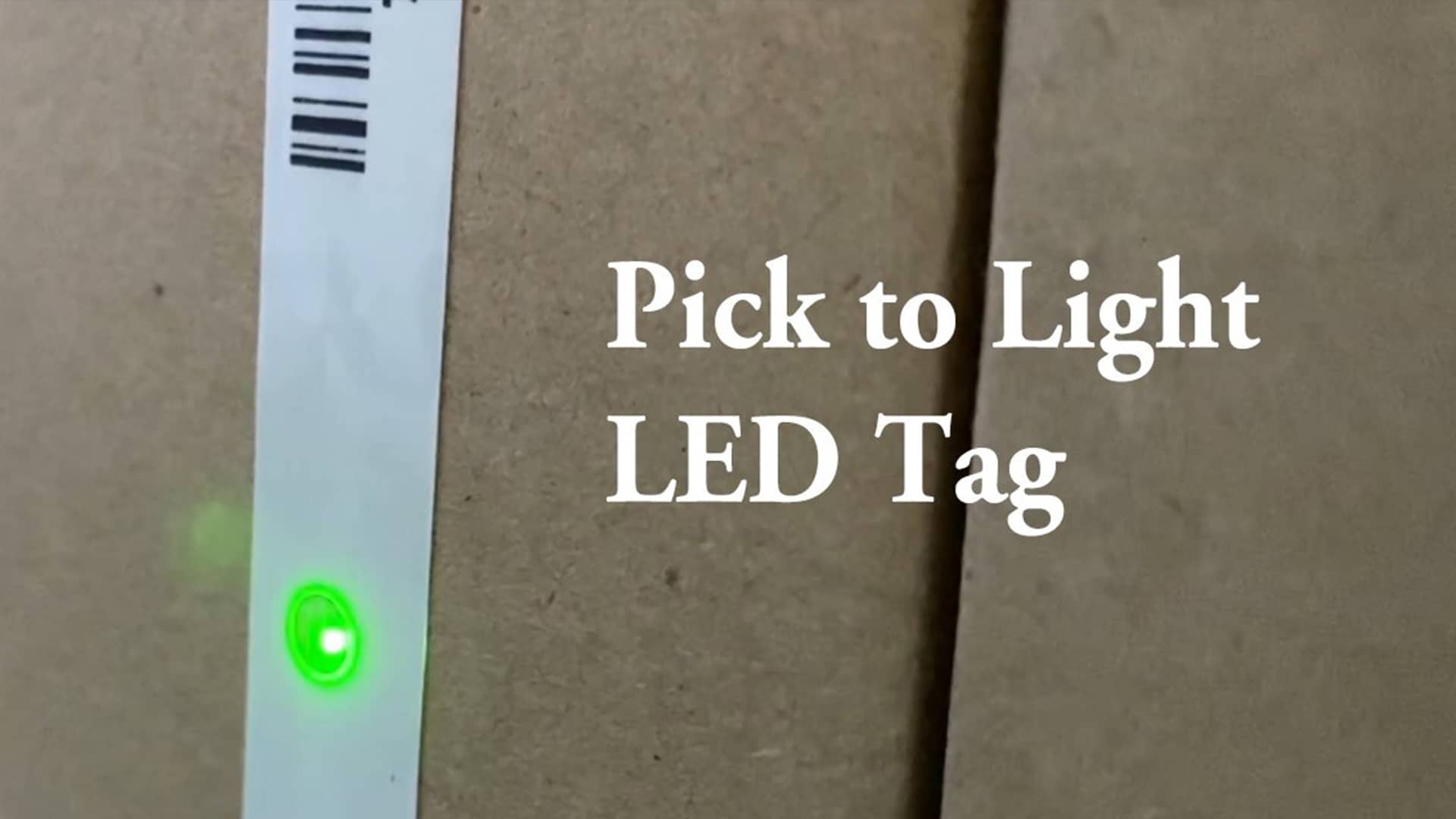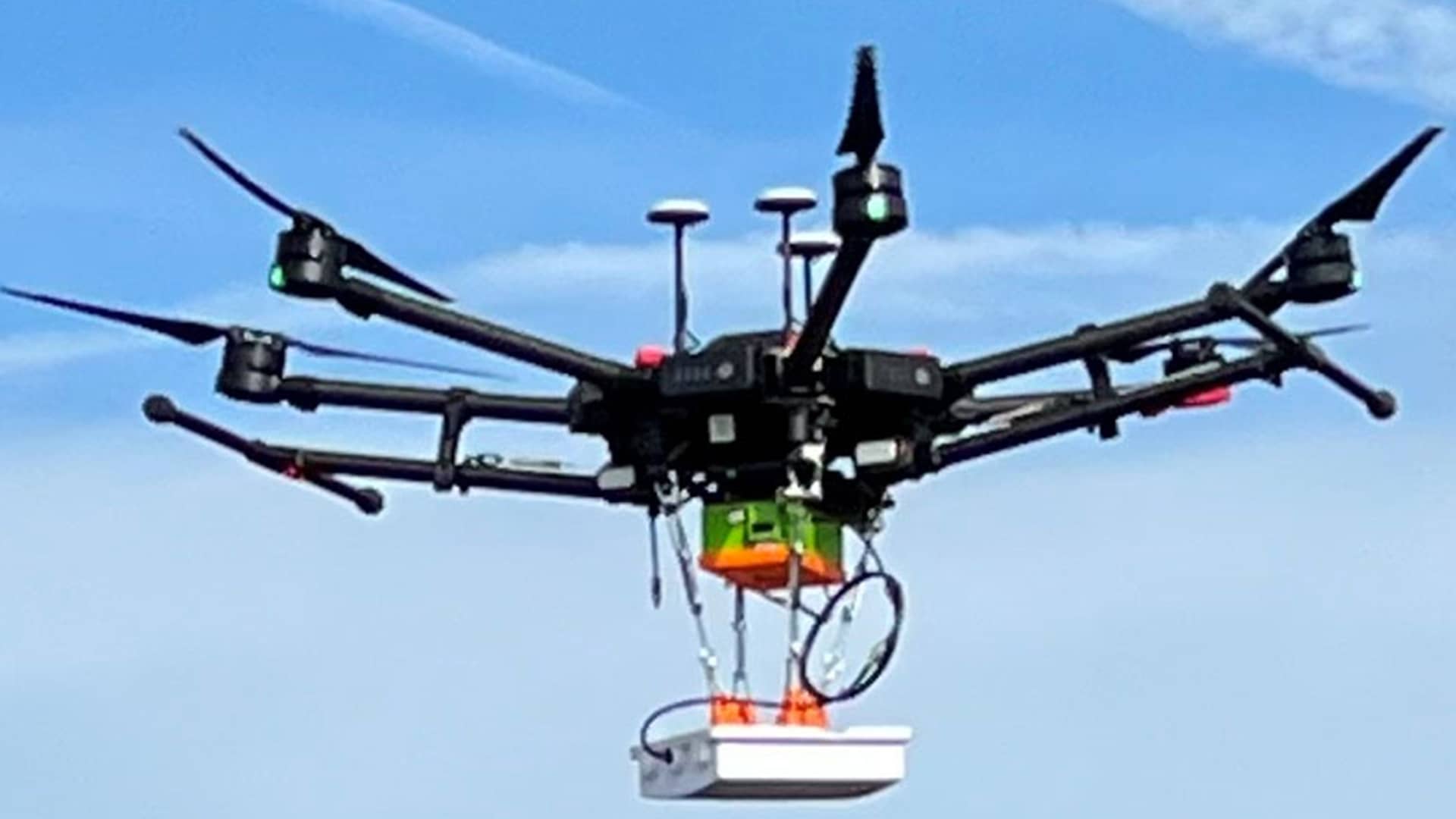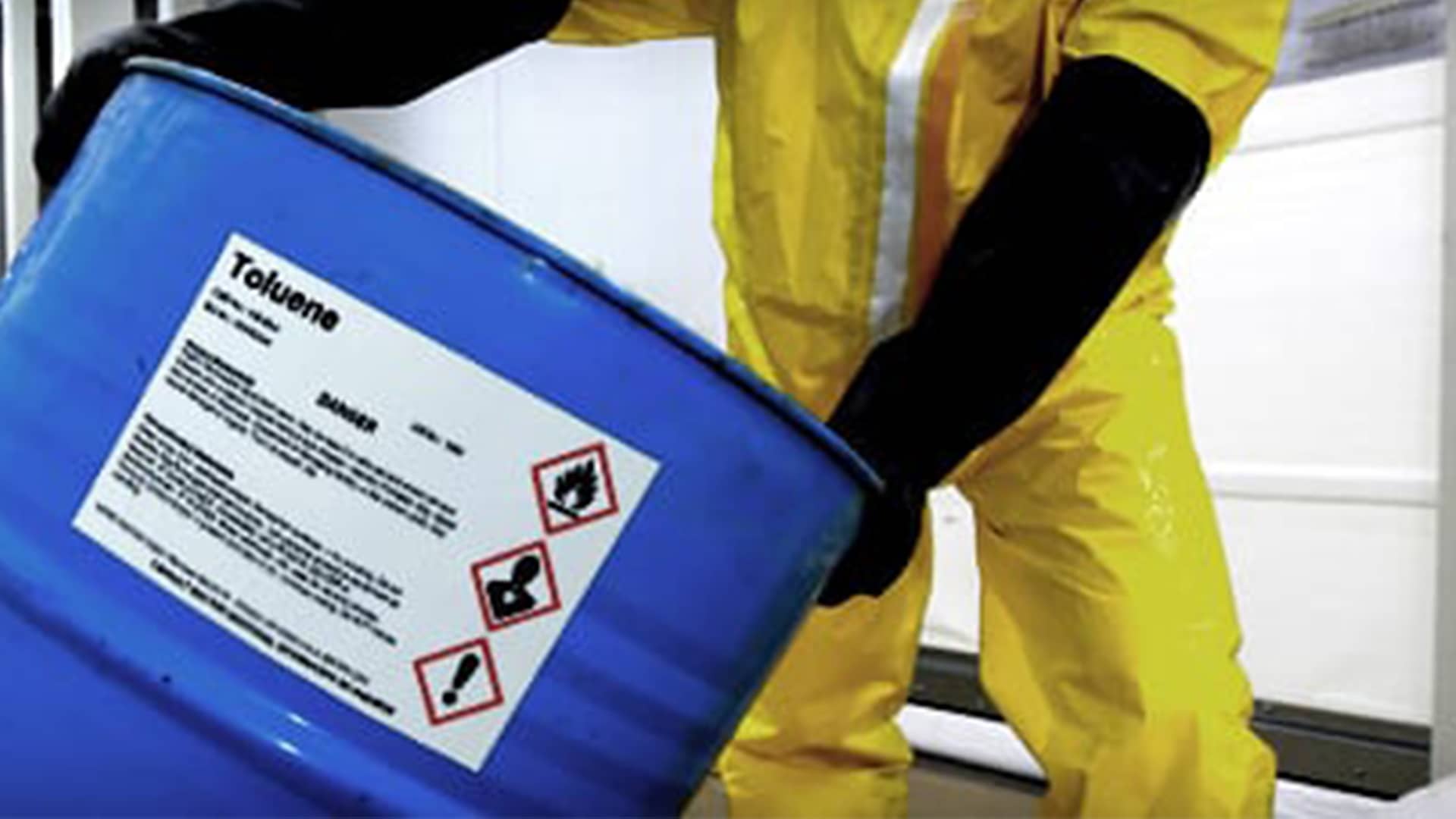 Call at :
+86 18681515767
Call at :
+86 18681515767
 Email :
marketing@jtspeedwork.com
Email :
marketing@jtspeedwork.com
 Call at :
+86 18681515767
Call at :
+86 18681515767
 Email :
marketing@jtspeedwork.com
Email :
marketing@jtspeedwork.com

With the rapid development of global trade, ports, as an important logistics node, are receiving more and more attention for their efficiency and intelligence level. Under the background of Internet of Things (IoT), the management and operation of containerized intermodal transportation is undergoing a profound change. In particular, the application of RFID (Radio Frequency Identification) technology provides a more efficient and precise solution for container tracking and management. The working principle of RFID technology RFID technology utilizes radio frequency signals for data transmission, mainly composed of three parts: tags, readers and data processing systems. The tag is usually attached to the container and contains unique identification information. The reader is responsible for reading the information in the tag and transmitting it to the data processing system for analysis and storage. In the intermodal transportation of containers in ports, RFID tags are scanned by readers when the containers enter and leave the port. Through real-time collection of container location, status and transportation information, the management system can quickly and accurately grasp the dynamics of the container. This process greatly reduces the need for manual operation and improves the accuracy and real-time data. Advantages of RFID technology Real-time: compared with the traditional bar code, RFID technology can realize non-contact recognition, do not need to align the scanner. Therefore, the status update of the container during transportation can be done in real time, which greatly improves the timeliness of the data. High degree of automation: RFID systems enable automated cargo management and tracking, reducing manual intervention. This not only improves efficiency, but also reduces losses due to human error. Data storage capacity: RFID tags can store more information, such as transportation routes, loading and unloading times, and cargo status. This rich data supports further analysis and decision-making, providing a more comprehensive perspective on container management. Environmental adaptability: RFID technology has strong environmental adaptability and can work properly under harsh conditions (e.g. high temperature, high humidity, etc.). This is especially important in complex operating environments such as ports. Reduced Costs: Although the initial investment in RFID systems is high, in the long run, the overall operating costs will be significantly reduced due to its improved efficiency and reduced error rate. Application Cases Taking a large international port as an example, the handling time of containers has been shortened by an average of 30% after the introduction of RFID technology in the port. Containers are automatically recorded through the RFID system when entering and leaving the port, and managers are able to grasp the location and status of the containers in real time. In addition, the port used RFID data for analysis to optimi...

With the rapid development of the Internet of Things technology, RFID tag technology is gradually maturing and has been widely used in many fields. However, traditional RFID tags often lack intuitive visual feedback during item management and tracking, resulting in low efficiency when locating and managing items in complex environments. Light emitting diodes (LEDs), as a kind of efficient light-emitting components, have been introduced into RFID tags in recent years, resulting in the innovative technology of RFID light-up tags, which realize fast positioning and intuitive display of identified objects by integrating LEDs. RFID light-up tags in the traditional RFID tags based on the addition of LED lights. When the tag is recognized by the reader, the internal circuit of the tag will control the LED light, to visually feedback the recognized state.RFID light electronic tags not only retain the traditional RFID tags of non-contact identification advantages, but also increased intuition, making the management of goods more efficient. (1) radio frequency signal transmission. Read-write through the transmitting antenna to send a certain frequency of radio frequency signals, these signals in the space propagation, the formation of a certain magnetic field range. (2) Tag sensing and activation. When the light-emitting RFID tags into the range of radio frequency signals emitted by the reader, the tag's antenna receives the radio frequency signals and produces an inductive current, thereby activating the chip in the tag. The chip uses the energy gained from the inductive current to prepare to send the information stored in the tag. (3) Information Transmission and LED Control. After activation of the tag chip will be stored in the tag information (such as electronic code, etc.) through the antenna in the form of radio frequency signals sent out, and at the same time to control the LED lights, the LED lights on the state as the item is recognized as intuitive feedback, to facilitate the staff to quickly locate the target item. (4) Information reception and processing. The read-write receives from the RFID light electronic tag sends the radio frequency signal, after the demodulation, decoding and so on processing, can obtain the RFID light electronic tag in the stored information. This information is then transmitted to the data management system for further processing and analysis. LED in RFID tags in the application of advantages: rapid positioning and intuitive display,, multi-target identification and simultaneous processing, low maintenance costs, strong penetration, data security and reliability. In summary, the application of LED in RFID tags not only retains the advantages of non-contact identification of RFID technology, but also increases the intuition and convenience. Translated with DeepL.com (free version)

Drones equipped with RFID (Radio Frequency Identification) technology can quickly read RFID tags on power distribution poles. Each tag contains unique identification information, and when a drone flies overhead, its RFID reader emits a radio frequency signal to activate the tag and receive its returned data. This process allows for rapid identification and data collection, typically completed in a matter of seconds. The mobility of drones enables this operation to occur at high altitudes or in hard-to-reach areas, significantly enhancing operational efficiency. The primary advantages of combining drones with RFID technology lie in their efficiency and accuracy. Traditional manual inspection methods are not only time-consuming but also prone to errors. In contrast, using drones for remote monitoring allows for real-time data collection that can be uploaded to the cloud for analysis. Additionally, drones can easily traverse complex terrains, reducing labor and time costs while improving operational safety. Automated data collection also enhances data integrity, ensuring that information about each power distribution pole is accurately recorded. In several electric utility companies, drones have been widely employed for the maintenance and monitoring of distribution networks. By installing RFID tags on each distribution pole, technicians can monitor the status of the poles in real time. For instance, a company conducts regular drone flights to collect data on pole temperature, humidity, and damage status, promptly identifying and addressing potential faults. This efficient monitoring approach not only saves considerable manpower but also enhances the stability and safety of the power system. As drone and RFID technology continues to evolve, the electric power industry is undergoing a technological revolution. This combination is making the management of distribution networks smarter and driving digital transformation within the industry. In the future, with the deeper application of the Internet of Things, more power facilities will connect to networks for smart monitoring and management. This not only helps improve the reliability of power supply but also supports energy conservation and emission reduction, promoting sustainable development. In summary, the rapid reading of RFID tags on power distribution poles by drones is gradually becoming an essential tool in the electric power industry. Its efficiency, accuracy, and safety characteristics showcase significant potential in maintaining and monitoring distribution networks. With ongoing technological advancements, the prospects for applications in this field will become even broader, providing strong support for the digitalization and intelligence of the electric power industry.

1. Real-time Monitoring of Hazardous Chemicals During Transportation The transportation of hazardous chemicals is a high-risk phase in their management. By attaching RFID tags to containers and combining them with sensors, the temperature, pressure, and other parameters of the chemicals during transportation can be monitored in real time. For instance, certain liquid hazardous chemicals are sensitive to temperature. If the temperature exceeds the safe range during transportation, the system will automatically send an alert through the RFID system to the control center, notifying operators to intervene and prevent accidents. This technology is particularly useful in the long-distance transportation of flammable, explosive, or toxic liquids, ensuring a safe and stable transportation environment and reducing the risk of leaks or explosions. 2. Monitoring and Warning in Hazardous Chemical Storage Hazardous chemical warehouses require strict control over environmental conditions such as temperature and humidity. RFID technology, combined with sensors, allows 24/7 monitoring of the storage environment. For example, certain flammable gases must be stored in a controlled temperature and dry environment. RFID tags equipped with temperature and humidity sensors can automatically record and upload data. If the storage conditions become abnormal, the system will immediately issue a warning, enabling warehouse managers to respond quickly and prevent accidents. This feature significantly improves the efficiency of warehouse management and allows for data analysis to optimize storage conditions, preventing potential safety risks from accumulating. 3. Rapid Traceability After Accidents After an accident, the RFID system can quickly trace the source, transportation, and storage details of the involved hazardous chemicals, helping managers identify the cause of the accident promptly. For instance, in the event of a chemical leak at a factory, RFID records allow managers to immediately locate the relevant batch, type of chemicals, and personnel involved, thus identifying the source of the problem and taking appropriate measures to reduce the risk of secondary accidents. 4. Chemical Identification During Rescue Operations During emergency rescue operations, RFID technology can assist responders in quickly identifying the types of hazardous chemicals involved and assessing their danger. For example, at the scene of a fire, rescue personnel can use portable RFID readers to scan chemical containers and instantly retrieve relevant information. This helps them determine whether specific chemicals require special handling, enabling the most suitable rescue strategy and preventing further disasters due to incorrect handling. Challenges and Future Prospects of RFID Technology Although RFID has shown significant advantages in hazardous chemical management, challenges such as interference resistance, high-temperature endurance, and cost control remain. As IoT, cloud computing...

In modern agriculture, the efficiency of seed cotton management is crucial for increasing yield and reducing costs. With the advancement of information technology, RFID (Radio Frequency Identification) technology has gradually become an important tool in the management of seed cotton warehouses. This article will explore the working principle of RFID technology in seed cotton warehouse management and its advantages. Working Principle of RFID Technology An RFID system consists of three components: tags, readers, and backend management systems. In seed cotton management, RFID tags are typically attached or sewn onto each bale of cotton, with the tags containing microchips and antennas that store information about the cotton, such as origin, variety, weight, and entry time. When the seed cotton is transported to the warehouse, staff use RFID readers to scan the tags. The reader emits radio frequency signals, and the tags respond by transmitting the stored information. This process's real-time nature and automation greatly simplify warehouse management tasks. Data is transmitted in real time to the backend management system, allowing managers to immediately access detailed information about each bale of seed cotton in the warehouse. This quick information retrieval provides a reliable foundation for scheduling and managing the warehouse. Advantages of Using RFID Increased Efficiency Traditional seed cotton management often relies on manual recording and inspection, which is time-consuming and prone to errors. The introduction of RFID technology makes the processes of receiving, shipping, and inventory management much more efficient. Staff only need to bring the reader close to the tag to quickly obtain information, significantly reducing manual input time and thus greatly enhancing work efficiency. Real-Time Monitoring RFID technology enables real-time monitoring of the flow status of seed cotton. Managers can check the location, quantity, and related information of each bale at any time, which is crucial for preventing loss and ensuring inventory accuracy. Moreover, the system can issue alerts in case of anomalies, helping managers respond quickly. Accurate Data Management The accuracy of data management is significantly improved with RFID technology. Information for each bale of seed cotton can be automatically recorded, reducing errors that may occur during manual data entry. This not only enhances data reliability but also provides accurate foundations for subsequent analysis and decision-making. For instance, managers can analyze real-time data to understand sales conditions and inventory status, allowing for more reasonable procurement and sales planning. Enhanced Traceability In modern supply chains, traceability is increasingly important. RFID technology can document the entire flow process of seed cotton from the field to the warehouse, creating a complete traceability chain. This is vital for meeting market regulatory requirements, improvin...

With the rapid development of the global shipping industry, efficient and accurate identification of ship identities has become an important means to improve marine safety and management efficiency. Traditional identification methods such as manual verification and barcode scanning have shortcomings such as low efficiency and prone to errors, which are difficult to meet the needs of modern shipping. In this context, RFID (radio frequency identification) technology came into being and became an ideal solution for automatic identification of ship identities. This article will discuss in detail the working principle, cost considerations and advantages of RFID technology in automatic identification of ship identities in terms of accuracy and anti-interference. 1. Working principle of RFID technology The RFID system is mainly composed of RFID tags and RFID readers. Each ship is equipped with a unique RFID tag on its hull or other key parts, which stores the ship's identity information, including data such as ship name, registration number, type and owner. When the ship approaches a port, dock or monitoring area, the RFID reader installed at these locations will emit radio waves to activate the tag. After receiving the signal, the tag will send the stored information back to the reader via radio waves. The reader then transmits this information to the central system to facilitate real-time monitoring and management of the ship's identity. An important advantage of RFID technology is its contactless data exchange. This means that even if the ship moves at a faster speed, the reader can quickly and accurately obtain data, thereby greatly improving the efficiency of identification. Compared with traditional manual inspections, RFID systems can complete identification within seconds, significantly shortening the time for ships to enter and leave the port. 2. Cost considerations The application of RFID technology in automatic ship identification has significant cost-effectiveness, which is mainly reflected in the following aspects: Equipment cost: The manufacturing cost of RFID tags is relatively low, especially when purchased on a large scale, the cost can be further reduced. The tags are small in size, light in weight, easy to install, and can withstand the challenges of the marine environment. Maintenance cost: The RFID system is durable and the tags usually do not need to be replaced frequently, which reduces maintenance costs to a certain extent. Compared with traditional manual verification or barcode scanning, the RFID system significantly reduces human intervention, thereby reducing human resource expenditures. Efficiency improvement: The RFID system can quickly and accurately identify the identity of the ship, which improves the throughput of the port. This efficient processing capability not only shortens the time for ships to enter and leave the port, but also saves corresponding costs for port operations. 3. Accuracy and anti-interference advant...
In the modernization of livestock farming, effectively managing and monitoring livestock health, behavior, and location have become critical challenges for farm managers. With technological advancements, Radio Frequency Identification (RFID) technology has been introduced into livestock farming, particularly through the application of RFID electronic ear tags, which further enable temperature measurement and positioning functions. The convenience and advantages of this technology make it an indispensable tool in the management of livestock. The Convenience and Advantages of RFID Technology Automation in Management: RFID technology significantly enhances the efficiency of farm management. Through the use of electronic ear tags, the identity, health status, breeding records, and movement history of livestock can be automatically recorded and managed, eliminating the tediousness and error rates of traditional manual records. Moreover, RFID systems allow for real-time monitoring, so managers do not need to personally inspect each animal but can instead read and analyze data remotely. Accuracy and Reliability: RFID tags are unique, and each ear tag contains a unique code embedded in the RFID chip, ensuring accurate identification of livestock. This avoids confusion or errors commonly seen in traditional manual records. Compared to barcodes and other identification methods, RFID technology is more resistant to interference and can function in harsh environments. Real-time Data and Traceability: With RFID technology, farm managers can obtain real-time information on each animal, and the data can be stored and processed through network systems. This not only facilitates real-time monitoring and management but also provides strong support for the traceability of the entire farming process. For instance, in the event of a disease outbreak or food safety issue, managers can quickly trace the health records and activity history of each animal and respond promptly. Long-distance Reading and Batch Management: Unlike traditional barcodes or visual recognition technologies, RFID allows for long-distance reading without physical contact and can even read multiple tags simultaneously. This is particularly important for large-scale farms, where it significantly increases work efficiency and saves labor and time costs. Working Principle of RFID Electronic Ear Tags An RFID system mainly consists of three parts: RFID tags (electronic ear tags), readers, and a data management system. RFID electronic ear tags typically contain a small RFID chip and antenna, and once attached to livestock, the ear tag communicates with the reader via radio waves. The working process is as follows: Tag Activation: When livestock wearing RFID electronic ear tags enter the range of a reader, the reader emits electromagnetic waves to activate the antenna in the ear tag’s chip, which then starts functioning. Information Transmission: Once the tag is activated, it sends the information stored ...

With the continuous development of the Internet of Things (IoT) and information technology, RFID (Radio Frequency Identification) technology has found widespread use in various industries, particularly in animal husbandry. RFID offers significant advantages in improving productivity, optimizing management, and ensuring animal health. By using non-contact methods for information collection and management, RFID introduces a new model of management and opportunities for growth in animal husbandry. This article explores the benefits of RFID technology in animal husbandry, with real-world examples of its application. 1. Animal Identification and Tracking One of the most direct applications of RFID technology in animal husbandry is animal identification and tracking. By attaching RFID tags to each animal’s ear, farmers can create a unique digital record for each animal. The RFID tag contains key information such as the animal’s birth date, breed, health status, and vaccination records. This information can be accessed through RFID readers at any time without disturbing the animal, making management more convenient for farmers. For example, in cattle and sheep farms, RFID technology helps farmers manage the growth of each animal precisely. When animals eat, drink, or undergo medical check-ups, RFID readers automatically collect relevant data, recording their activity and health status. This allows farmers to effectively monitor their growth, ensure their well-being, and make more targeted management decisions. 2. Disease Prevention and Health Management RFID technology also plays a major role in managing livestock health. With large herds, it is difficult to manually track the health status of each animal. Through an RFID system, farmers can monitor real-time health data for each animal, enabling more accurate disease prevention and diagnosis. In pig farms, for instance, RFID tags embedded in each pig’s ear can track its feeding habits, temperature changes, and other health indicators in real time. If a pig shows abnormal behavior, such as a decrease in food intake or a rise in body temperature, the RFID system can automatically trigger an alert, prompting the farmer to take necessary action. This real-time monitoring helps detect diseases early, prevent outbreaks, reduce veterinary costs, and improve overall farm health management. 3. Automated Feeding and Management RFID technology brings a high level of automation to livestock farming. In the feeding process, RFID can not only record and track animal data but also work in conjunction with automated feeding systems to achieve precise feeding. For example, after identifying an animal through RFID, an automated feeding system can dispense the appropriate amount of feed based on the specific needs of each animal, ensuring accurate feed distribution and minimizing waste. In dairy farms, RFID technology is widely used alongside automated milking systems. When a cow enters the milking area, the RFID tag aut...
Categories
New Products
JT-6210 0-1m UHF RFID Desktop USB Reader Writer ISO18000-6C Read More
JT-7100 0-3m 860-960MHz UHF RFID Industrial Grade RFID Reader Read More
JT-8380 0-6m UHF RFID 860-960MHz Middle Range Integrated Reader Read More
JT-P983 Industrial Tablet Pad RFID Handheld Reader Grade Long Range Android UHF Terminal Bluetooth RFID Reader For Warehouse Read More
JT-1550 Small Mini HF RFID 13.56MHz Module ISO14443A ISO 15693 Protocol Read More
JT-2302A 13.56MHz RFID Module ISO14443A ISO15693 Protocol Read More
JT-2302 HF RFID 13.56MHz Module ISO14443A ISO15693 Support Mifare1 IC card Read More
JT-2540 TM200 UHF RFID 4-port Module 860-960MHz TTL Read More
Copyright © 2025 Shenzhen Jietong Technology Co.,Ltd. All Rights Reserved.

IPv6 network supported